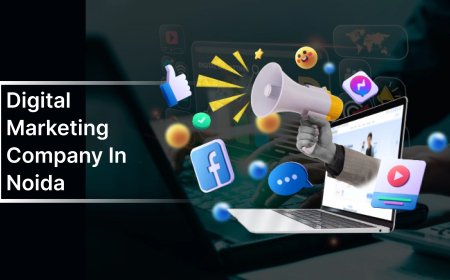How to Choose the Right USB Cable for Your Devices?
Not every USB cable is made equal, and if you’ve ever taken one up only to discover that it fails to charge your mobile device quickly enough or cannot connect to a laptop, you are already aware of that.
With multiple connector types, charging speeds, and features, picking the proper cable isn’t as easy as it used to be. It’s no longer only about what works, but also about what works best for your device.
Some cables merely charge, while others additionally transfer data or offer high-power transfer.
Anything wrong can slow down, overheat or use up the port over time. Whether you replace a lost cable or buy a new one for a particular device, some basics make your choice easier, and you can get the performance you paid for.
Let’s break this down clearly.
Key USB Cable Function
It is necessary to understand the core functions before selecting the cable. A USB cable is not just a wire - a functional bridge between two devices.
Charging device
USB cables are used to deliver electricity from a charger or computer to the device. Load speed depends on both cable and device compatibility.
Data transfer
A USB cable also makes it easy to send data between two devices.
Transfer photos from your mobile phone to your computer.
Peripheral connectivity
These are usually used to connect accessories such as printers, external hard drives, and game controllers.
Types of right USB connectors
There are different USB Connection Forms. Understand that supporting your device is the first step.
USB Type-A
USB Type-A is the widest and traditional USB connection. It has a flat, rectangular shape and is often found on the host side of connections, such as computers, laptops, TVs, gaming consoles, and wall chargers.
USB Type-B
USB Type-B is more commonly found on larger peripherals, such as printers, scanners, and some older external hard drives. It has a square shape with corners engraved on one side.
Mini USB
Mini USB was a frequently used connection type in portable electronic devices, such as digital cameras and MP3 players, in the early 2000s. It is smaller than the standard type B, but larger than the micro USB.
Micro USB
Micro USB Type-B became the standard connection for Android smartphones from 2008 to 2018, and many accessories. Smaller and thinner than USB, it was often used for charging and transferring data.
USB TYPE-C
USB Type-C is the most recent and advanced USB connection. It is designed to replace all previous types with a single, universal standard. USB-C supports high-speed data transfers, fast charging, video output and power supplies all in a compact, reversible format.
Key Practices for Choosing the Right USB Cable for Your Device
You not only find the right USB cable to connect something, but also hope it will work. It's about knowing what your device needs, understanding how cables work, and ensuring both ends function properly.
Choosing the wrong cable can slow down data transfer speeds, reduce load times, or even damage the device. The following best practices guide you through the most essential considerations, enabling you to select the correct USB cable for your specific needs.
1. Know your device requirements
Decide what your device needs from a USB cable. Not all devices require the latest USB 4.0 cable or support fast charging.
What check
-
Connection type: Please see USB connection (Type C, Micro USB, Lightning, etc.).
-
Charging Standard: Use a phone USB power (PD). Others rely on quick fees, such as VOOCs, or their standards.
-
Data Transfer Requirements: If you are transferring files or using cables to protect them, make sure that the cable supports data sync, not just electricity.
Tip: For compatibility details, refer to your device's specifications or the manufacturer's website.
2. Verify connector compatibility on both ends.
Try to verify the connector that you want to join with your device with both ends.
Example:
-
USB-C to USB-C: Perfect for new Android phones, MacBooks, and USB PD chargers.
-
USB-A to USB-C: Works well with traditional wall charging devices and new phones.
-
USB-A to Micro USB: Suitable for old phones, speakers and accessories.
-
Lightning from USB-A: For Apple iPhone and iPad.
Why it matters:
Using the wrong connection means that the cable simply fits.
3. Understand the USB Version and Speed Support
USB (2.0, 3.0, 3.1, 3.2, or USB) versions define data transfer speed and charging capabilities.
Breakdown:
-
USB 2.0: General load, up to 80 Mbit/s transmission speed.
-
USB 3.0/3.1: Up to 5-10 gbit/s supports higher data loads (external drives, large files).
-
USB/Thunderbolt 3/4: Ultra-fast data (up to 40 Gbit/s) supports 4K/8K video used in extended workstations.
Why is it important?
When sending large media files or using an external SSD, the USB 2.0 cable is significantly slowed down and may not work at all.
4. Check the Power Delivery capabilities
Check if the power delivery (PD) defines the amount of power the cable can safely carry. This is important when devices like laptops, tablets, and high-speed smartphones are being charged.
Best Practices:
-
If your device is charging quickly, look for a USB-C cable rated for the Power Delivery (PD) standard.
-
For a laptop, ensure the cable is visible between 60W and 100W (e-Marker chip).
-
Short cables tend to load faster due to lower resistance.
Avoid:
Cheap cables advertise fast rates, but without a security certification, they can overheat or damage the battery over time.
5. Prioritise cable quality and build durability
Well-made cables provide long-term durability and high-quality cable.
Search:
-
Braid or reinforcement to avoid fraying.
-
Thick measuring wire (e.g.24AWG).Boots for near-connection relief to reduce bending tension.
-
Gold plating tips for improving conductivity and corrosion resistance.
Why it matters:
Cheap cables often have insulation and weak connectors, making them vulnerable to breakage, overheating, or inconsistent charging.
6. Avoid “Charge-Only” Cables if You Need Data Transfer
Budget cables are electricity only. This means that it does not support data transfer. These are fine for simple charging, but they are useless for syncing or backing up files.
Identification:
-
Package or product descriptions typically only mention "no data sync."
-
If it's not safe, always buy from a reputable brand or check customer reviews.
Pro Tip: When using a computer or file-sharing device, always ensure the cable supports both data transfer and loading.
7. Opt for Certified and Branded Cables
If you choose certified and branded cables, the certified cable ensures security and performance standards. They reduce the risk of overheating, peak tension, or port damage.
Recommended Certification:
-
USB-IF Certification (check usb.org)
-
MFI Certification (for iPhone/iPad for Flash Cables)
-
PD Certification (USB-C Cable Supporting Power)
Avoid:
If the cables appear identical but are unverified or of lower quality, they are not guaranteed for speed and data transfer.
8. Match the cable length to the use case
Length depends on both amenity and performance.
Selection:
-
1-3 ft: Ideal for fast charging and support.
-
6ft: Suitable for using the device when charging (for example, on a sofa or bed).
-
10 feet or more: Ideal for difficult socket access, but low voltage can slow charging.
If you need a long cable, consider using an active USB cable (especially for USB 3.0 or higher) that includes a signal amplifier to maintain the integrity of the signal data.
9. Don't ignore firmware or device-specific needs
Some devices, especially modern mobile phones or cameras, have their requirements regarding firmware or ecosystems.
Example Scenario:
-
Samsung Super Fast Charging requires a USB-C to USB-C connection with PD 3.0 and PPS.
-
Some action cameras require a data-certified USB 3.0 cable for transferring 4K video.
-
Older MacBooks only support Thunderbolt-certified USB-C cables.
Check the user manual on your device, the manufacturer's support page, or the forum for cable-specific requirements.
10. Test the cable when possible
Always test new cables for both charging speed and data sync before committing to long-term use.
Test Tips:
-
Use a USB Tester to check the voltage and output.
-
Try transferring the file to see the data rate.
-
Check if heat can accumulate while charging - excessive heat is a red flag.
Certified cables can also be defective or fake. Early testing ensures that your device's health is not at risk.
Conclusion
After following these best practices, you will ensure that you not only choose the correct cable but also that it fits and that the cut is well done, taking the mandatory time to ensure your device remains safe.
Whether you're a power user, an occasional smartphone user, or a mix of both, managing the mixing of high-tech equipment can save you a few minutes, reduce cable selection time, and even save you money.
What's Your Reaction?































































